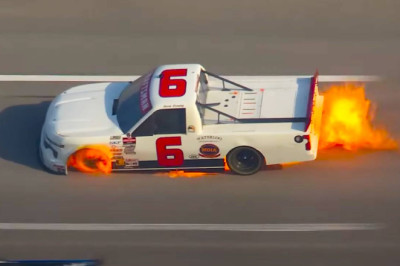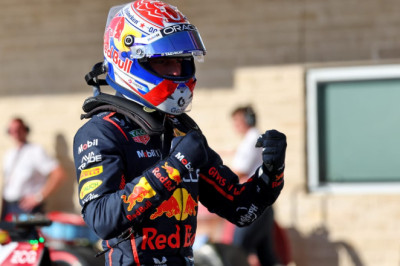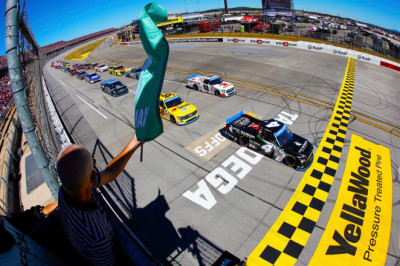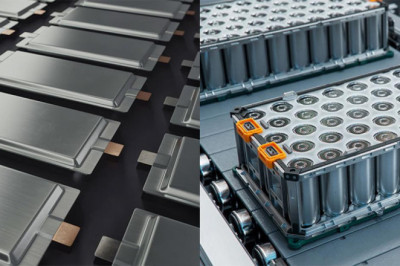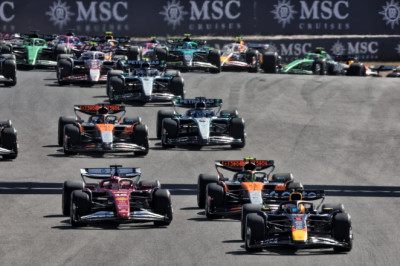
From budget Beetles to slammed Civics, the humble four-cylinder engine has been the price-conscious choice of both gearheads and commuters for as long as most of us can remember. But that doesn’t mean four-bangers are always cheap.
Some of the world’s prettiest, rarest and race-winningest cars happen to have four pistons under the hood. Below are four of the most valuable ones in the Hagerty Price Guide.
Condition #2 value: $1,500,000
The successor to Alfa Romeo’s Giulietta Sprint Zagato (SZ), the Tubolare Zagato (TZ) utilized a tube (tubolare) chassis underneath an aluminum Zagato skin defined by gentle curves and a distinctive Kamm tail that the Italians call a coda tronca (“shortened tail”). Its 1570-cc twin-cam four, derived from the Giulia, was plenty to keep the sub-1500-pound Italian competitive in its class across all the great sports car races of the day. Alfa built 112 TZs, which subsequently became known as TZ-1s. A lighter, more powerful, fiberglass-bodied version called the TZ-2 came out in 1964, but Alfa built just a dozen of those.
TZ-1 values dropped significantly after a soft $819K sale of one in Monterey last year, but this is still one of the most desirable four-cylinder cars out there.
Condition #2 value: $880,000
The 1900 set Alfa Romeo down the path of becoming a volume manufacturer that sold larger numbers of smaller and more affordable vehicles than it had during the 1920s and 1930s. But, this being an Italian car during the 1950s, a small number of 1900s went to coachbuilders, including Zagato, who bodied 39 1900 coupes.
They’re rare, then, but these cars—called the 1900 SS Zagato or SSZ—are worth $880,000 in our price guide in #2 condition, or $1.15M in #1 (“concours” or “best in the world”) condition.
The three famous B.A.T. (Berlina Aerodinamica Tecnica) concept cars by Bertone are also based on the four-cylinder Alfa 1900 platform, and they sold as a trio for $14.84M ($4.95M apiece) at auction back in 2020.
Condition #2 value: $1,250,000
When the Maserati brothers’ race car business got into financial trouble in the ’30s and they were forced to sell it, they were nevertheless retained at their eponymous company for 10 years. In 1947, though, their contract was up and they were free agents again. They immediately set about starting a new business, but couldn’t exactly use their name anymore, so they called their new enterprise Officine Specializzata Costruzioni Automobili Fratelli Maserati, which is a bit of a mouthful, so everybody called it OSCA for short.
OSCA was around for 20 years, and its most significant model was the MT4 (Maserati Tipo 4). Fewer than 80 were built, but MT4s racked up dozens of race wins and podiums on both sides of the Atlantic, including Stirling Moss’ overall win at the 1954 12 Hours of Sebring, despite the car being in the under-1.5-liter class.
Engines ranged from an 1100-cc Fiat-derived engine to OSCA’s own aluminum block, alloy-head cam engine, which came in both single- and twin-cam variants, and ranged from 1.1 to 1.5 liters. Bodies, meanwhile, ranged from well-appointed coupes to a cycle-fendered, cigar-shaped racer called the Siluro. Given their variation in styling, engine and race history, placing precise values on OSCAs isn’t an exact science, but they are some of the most desirable four-cylinder cars around. One ex-factory race car sold for €1,270,625 (about $1.37M) two years ago, and another one with great history but in barn find condition sold for $461,500, also in 2023.
Condition #2 value: $5,000,000-$5,700,000
With its mid-engine layout and highly complex double overhead cam flat-four, the original Porsche 550 was cutting edge for the mid-1950s, but at the same time had a simple body constructed of alloy panels, and the entire rear half hinging backwards for easy mechanical access. Coupe versions of the 550 won their class at both Mexico’s Carrrera Panamericana and France’s 24 Hours of Le Mans. Success in the 1953 and 1954 Mexican race led to Porsche adopting the “Carrera” name for its new four-cam engine, and the company continues to use Carrera in model designations to this day. The 550 also established Porsche’s reputation as a builder of giant-killing sports cars as it frequently dominated the smaller displacement race classes and could compete with much larger and more powerful machinery.
Porsche built 90 550s on a relatively simple ladder chassis before debuting the 550A, which utilized a lighter and more rigid spaceframe design. Porsche then built a further 40 of these 550As, which evolved into the similarly successful 718 RSK, RS 60, and RS 61. This is another car where race history makes a big price difference, but in our price guide the #2 value ranges from $5M (550) to $5.7M (550A). If that sounds a little steep, the good news is that 550 replicas are popular, and the #2 value for a well-regarded Beck 550 is just 50 grand.
I’m reasonably sure a few Coventry Climax powered Lotuses would qualify for such a list as well. So would certain variants of Porsche’s 356.






